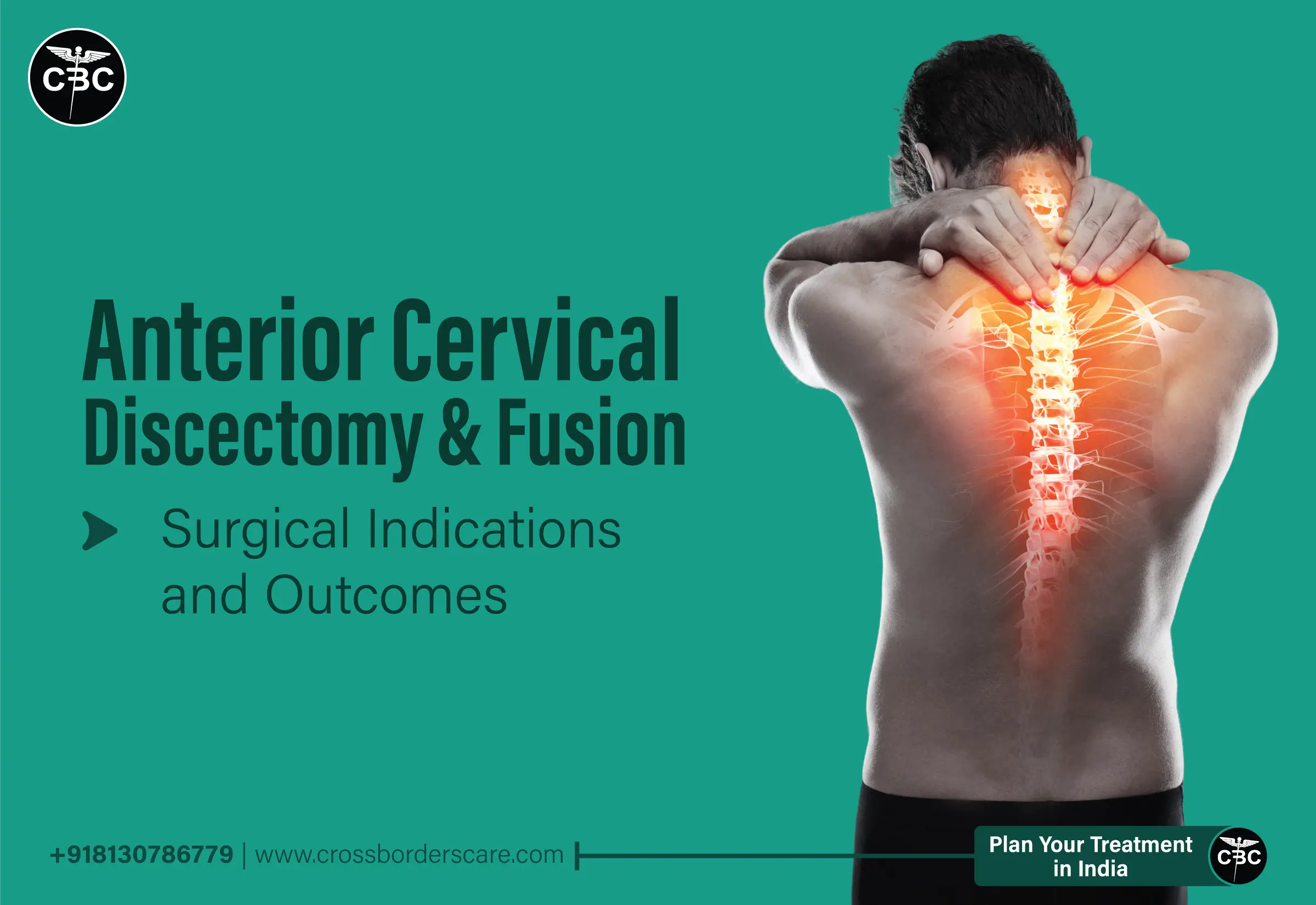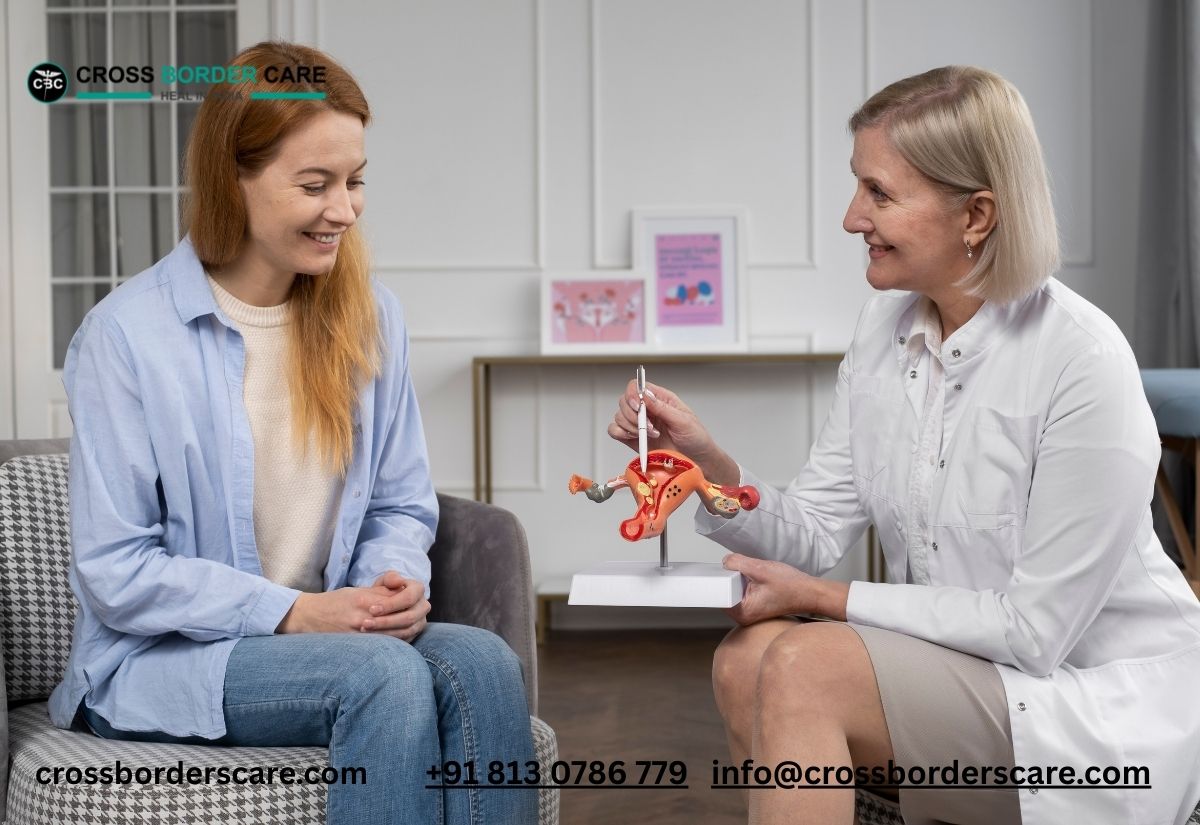Anterior cervical discectomy and fusion (ACDF) is a surgical treatment used to treat neck pain and neurological problems caused by degenerative cervical discs in the cervical spine. In an ACDF procedure, an orthopedic or neurosurgeon gains access to the cervical spine from the front of the neck, removes the herniated or slipped disc or discs with care, and then replaces them with a bone graft or artificial spacer.
This spinal segment is stabilized through fusion, which stops additional movement and relieves discomfort. Herniated discs, degenerative disc disease, and cervical spondylosis are among the disorders that frequently require the ACDF operation. Although it does restrict some neck movement because of the fused segment, it frequently leads to enhanced neck function and a decrease in accompanying complaints. There could be hazards with surgery, as there always are. And as with any surgery, there are potential risks and benefits that should be discussed with a healthcare professional before the procedure. Also, Anterior Cervical Discectomy and Fusion (ACDF) cost in India can vary significantly depending on factors such as the hospital, location, and the specific requirements of the procedure.
Surgical Indications
Anterior cervical discectomy and fusion (ACDF) is recommended for a number of cervical spine issues that cause pain, neurological symptoms, or spinal instability. The following are typical surgical indications for ACDF:
- Herniated Disc: When a herniated cervical disc pushes on spinal nerves or the spinal cord and results in symptoms like neck pain, arm pain, numbness, weakness, or tingling, ACDF is frequently advised.
- Degenerative Disc Disease: ACDF may be considered to treat symptoms and stabilize the spine when cervical discs gradually deteriorate, causing chronic neck pain, radiculopathy (nerve compression), or myelopathy (compression of the spinal cord).
- Cervical Spinal Stenosis: Narrowing of the spinal canal in the cervical region is known as cervical spinal stenosis. If this condition exists, ACDF can assist relieve spinal cord compression, which can cause weakness, balance problems, and other neurological concerns.
- Cervical Spondylosis: This age-related disorder affects the neck’s joints and spinal discs by causing wear and strain. When spondylosis causes discomfort, nerve compression, or instability, ACDF may be used.
- Trauma or Cervical Fractures: In situations of cervical spine fractures, particularly those that result in instability or endanger the integrity of the spinal cord, ACDF may be required to regain stability and stop additional damage.
- Failed Conservative Treatment: ACDF may be explored as a surgical option when conservative therapies like physical therapy, medicine, and rest fail to relieve cervical spine symptoms.
- Tumors: Using ACDF, cervical spine tumors or infections that have spread to the spinal discs or other tissues can be removed.
Due to competitive Anterior Cervical Discectomy and Fusion (ACDF) costs in India patients often choose to undergo ACDF in India.
Procedure
Anterior cervical discectomy and fusion is a surgical treatment used to treat a variety of cervical spine disorders. Here is an overview of the procedures:
- Anesthesia: To ensure that the patient is unconscious and pain-free throughout the treatment, general anesthesia is often administered before surgery.
- Positioning the patient: The patient is lying on their back, and the area around their neck is exposed and cleansed. Usually on the right or left side, a tiny incision is made at the front of the neck.
- Access to the Spine: The surgeon carefully separates and moves aside the soft tissues, such as muscles and blood vessels, to access the cervical spine. Direct access to the afflicted area is provided by this method from the front of the neck.
- Removal of the Disc: The herniated or injured disc is then carefully removed. To increase precision, surgical tools like microscopes or surgical loupes may be employed.
- Placement of a Spacer or Bone Graft: A spacer or bone graft is put into the vacant disc area to preserve the correct spacing between adjacent vertebrae and to encourage fusion. The transplant may be either an allograft (donor bone) or an autograft (bone taken from the patient’s own body, commonly the hip).
- Fixation: To stabilize the spine and hold the vertebrae in place, the surgeon frequently uses hardware like metal plates, screws, or cages. The fusion process is supported by this hardware.
- Closing the Incision: The surgeon uses sutures or staples to close the incision after making sure the graft and hardware are properly positioned.
- Recovery: After being observed in the recovery area, the patient is sent to a hospital room for observation and post-operative care.
The affordable Anterior Cervical Discectomy and Fusion (ACDF) cost in India makes it an attractive option for both domestic and international patients seeking spinal surgery.
Post Operative Precautions
To guarantee a successful recovery and reduce problems after anterior cervical discectomy and fusion (ACDF) surgery, post-operative precautions are essential. Here are some general post-operative safety measures to take into account:
- Neck Immobilization: You might be forced to wear a neck brace or collar to prevent your neck from moving and to give support. Pay attention to your surgeon’s recommendations for when and how to wear it.
- Restricted activities: You must first refrain from engaging in any activity that could put stress on your neck or spine. Heavy lifting, bending over at the waist, and demanding activities fall within this category. Guidelines on when it is safe to gradually resume these activities will be given by your surgeon.
- Medication: Follow the directions on the prescription for antibiotics and painkillers. These drugs can aid in pain management and infection prevention.
- Proper care of incision: Maintain the surgical incision by keeping it clean and dry. Report any signs of infection, such as redness, swelling, or discharge, and adhere to any wound-care recommendations your surgeon may have given you.
- Avoid drinking and smoking: If you smoke, it’s best to stop because it can slow down the healing process. Limit your alcohol intake as well because it may affect your ability to recover and take your medication.
- Follow-Up Consultations: Keep all of your surgeon’s scheduled follow-up appointments. These consultations are necessary for tracking your development and correcting any issues.
- Physical Therapy: Participate in physical therapy sessions as directed to gradually increase neck strength and mobility.
- Driving Restrictions: Because of the neck brace and painkillers, you might not be able to drive for a certain time after surgery.
For people suffering from cervical spine conditions that cause pain and neurological symptoms, ACDF is a great surgical option. A successful ACDF depends not just on the surgeon’s skill, but also on the patient’s commitment to post-op care and rehabilitation. Patients can look forward to a brighter, pain-free future by working closely with healthcare professionals. Anterior Cervical Discectomy and Fusion (ACDF) cost in India is typically lower than in many Western countries, it’s essential for patients to thoroughly research healthcare providers to ensure they receive safe and effective treatment.
September 11, 2023



















